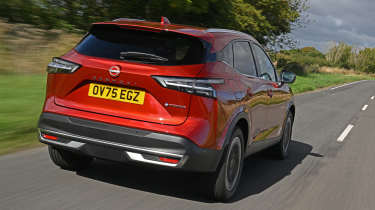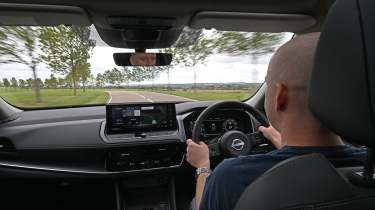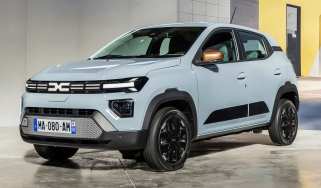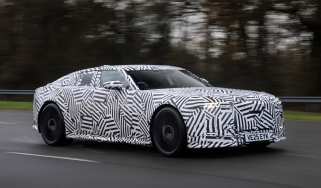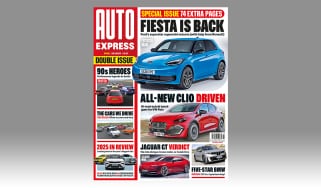New Nissan Qashqai e-Power 2025 review: one of the most complete family cars money can buy
Revised e-Power hybrid tech and minor tweaks make this family car the most complete Qashqai yet

Verdict
We were quietly impressed with the Nissan Qashqai when it first launched, but it’s fair to say that we weren’t exactly overflowing with praise, either. A big part of that stemmed from what was available under the bonnet, because it never had a particularly inspiring powertrain on offer. That all changes with this revised e-Power. Smooth, responsive, refined and – most importantly – impressively efficient, it’s one of the best hybrid powertrains money can buy. Throw in some minor tweaks to the much-improved infotainment set-up that was introduced last year, and with this engine, the Qashqai feels like the complete family car.
This is the new Nissan Qashqai – although, as we’re sure you can tell from the pictures, it’s not so much a new version of one of Britain’s best-selling cars, but a new powertrain installed in the existing model. And as powertrains go, this one has seriously impressed us.
Nissan’s e-Power hybrid tech has proven to be very popular, with more than a quarter of a million units sold in Europe since the system was introduced in the Qashqai and larger Nissan X-Trail. It’s been available for even longer in Japan – European buyers skipped the first iteration of the system and went straight to second-gen tech.
Used - available now

2022 Nissan
Qashqai
16,782 milesManualPetrol1.3L
Cash £15,897
2022 Nissan
Qashqai
23,455 milesManualPetrol1.3L
Cash £15,697
2022 Nissan
Qashqai
22,342 milesAutomaticPetrol1.3L
Cash £15,697
2022 Nissan
Qashqai
32,007 milesManualPetrol1.3L
Cash £13,997However, the e-Power models have never quite hit the mark from a driving point of view. Yes, they were fairly responsive, thanks to a set-up where only the electric motor drives the front wheels (it’s easiest to think of e-Power as an EV that uses a petrol engine, instead of a big battery, to send energy to the electric motor). However, despite the system’s strengths, it was always let down by average refinement and fuel efficiency.
Now, Nissan is aiming to address these flaws with an overhauled third-generation version of its e-Power tech. You can also make your Nissan Qashqai more affordable to buy by checking out our latest Qashqai deals through the Auto Express Buy a Car service.
Part of the reason for the previous issues was the fact that the petrol element of the hybrid set-up, a 1.5-litre engine, was never designed to be run as a generator – it was lifted from the Nissan parts bin having served in cars where it’s used as a conventional engine. Now that turbocharged three-cylinder unit has been extensively overhauled to be tuned for its intended use in the next generation of e-Power.
If you’ll indulge us in some tech-nerdery, a big part of the improvement comes from a reduction in turbulence through the intake port into the cylinder. A new cold-spraying technique for the coating of the valve seats blasts metallic powder at supersonic speeds to make it stick, which is a first for the automotive industry and eliminates the need for traditional press-fitted valve seats. This allows the air/fuel mixture to take a smoother path before it combusts. And a smoother path means a more efficient burn.
All of this means that the 1.5 turbo now offers a thermal efficiency of 42 per cent, ranking it among the most efficient petrol engines on the market. For reference, Toyota claims 41 per cent thermal efficiency for the 1.8-litre unit in the Prius, and BYD says the 1.5-litre four-cylinder in its Seal 6 DM-i plug-in hybrid hits 43 per cent. So what all of this sciencey stuff means for the average family car buyer is that the Qashqai’s latest engine should be as light on fuel as two of the most fuel-sipping petrol powertrains we’ve tried.
But the changes extend beyond the engine, because the rest of the hybrid system has been improved, too. Essentially, a big chunk of the electrical element of the Qashqai e-Power is shared with the all-new Leaf. A couple of extra components that aren’t used by the Leaf are needed here to convert petrol into electricity, and it’s all housed in a new “five-in-one” unit. By grouping all of these together, a stronger, stiffer structure is produced than the arrangement used in Nissan’s outgoing e-Power layout. This not only reduces vibration, but contributes to a 28kg weight saving.
The overall results look promising on paper. Nissan says the new system is 15 per cent more efficient than before, with a particular focus on reducing fuel consumption at motorway speeds. As much as 62.8mpg is claimed on the WLTP cycle (depending on trim level and wheel size), meaning that the Qashqai has a theoretical range of 745 miles. CO2 emissions have dropped by 12 per cent, down to as low as 102g/km.
The benefits keep coming, because power has also increased slightly, now standing at 201bhp. That’s 13bhp more than before, which is enough to trim three- tenths of a second off the 0-62mph time – now standing at 7.6 seconds. This peak power is only available in Sport mode, with Standard and Eco modes still offering the same 188bhp as before. Maximum torque is unchanged at 330Nm.
The focus on reducing vibration and optimising the engine revs for their intended purpose has boosted refinement, too. Nissan claims the average noise levels on an acceleration run from 50-75mph have been reduced by 5.6 decibels from before. However, it’s not only under load where the engine is more hushed - its maker says that the engine is now quieter across almost its full rev range.
That’s all well and good on paper, but what really matters here is that Nissan’s claims were backed up when we took the new model out for a drive.
As before, the e-Power has the same, smooth EV-like response, with each press of the accelerator pedal – following a very brief pause – delivering a consistent and strong stream of acceleration. You’d be very hard-pressed to notice that three-tenths improvement in the 0-62mph time, but it certainly feels sprightly.
What is significantly easier to appreciate is just how much quieter the engine now is. Pretty much the only time we really noticed it was if the battery ran low at a standstill, at which point there was a gentle thrum and the slightest of vibrations coming from the three cylinders under the bonnet. Even under hard acceleration, at most you’ll hear a distant hum from under the bonnet, but compared to the Toyota hybrid – and especially the rough four-cylinder used in the Kia Sportage and Hyundai Tucson HEVs – the Qashqai seems utterly serene. In terms of refinement, it’s closer to a fully electric car than it is to its main hybrid rivals.
Perhaps most importantly of all, however, is that the new powertrain is able to deliver impressive fuel consumption, too. Our week behind the wheel – which covered all types of roads, including plenty of motorway miles and acceleration testing – liberated an average fuel consumption of roughly 53mpg. Sure, that doesn’t quite match the N-Connecta’s official 61.4mpg claim, but for a car in this class, it’s still very impressive. Further financial savings come at service time, because this new e-Power has 12,000-mile intervals – up from the previous 9,000 miles.
The updated e-Power looks pretty much identical to before, but some small changes, including tweaked door mirrors, front tyre deflectors to channel air around the sides of the car more cleanly, and a larger undertray, all contribute to 1g/km of that overall reduction in CO2 emissions.
Elsewhere, the Qashqai retains all of its previous strong points. It’s towards the comfier side of the class when it comes to ride and handling, although it still feels a little more responsive than many of its rivals through turns, too.
The interior isn’t the most exciting to look at, but ergonomically it’s hard to fault. Big, physical controls for the air-conditioning are a huge plus, and a Google-based infotainment system, introduced during last year’s mid-life facelift, is miles better than the tech that the Qashqai launched with. More recent software updates have refined this system further.
Despite all of these improvements, buyers won’t have to pay any more for the privilege. Indeed, among the Qashqai’s five trim levels, the price for the e-Power is identical to before in three of them, while it has actually dropped by a nominal £50 in N-Design and Tekna specifications. That means the range kicks off from £34,860 for the entry-level Acenta Premium, and tops out at the £43,210 Tekna+. The car in our pictures is our pick of the range, the N-Connecta, which costs £37,330.
Those figures are right on par with the Qashqai’s closest rival, the big-selling Kia Sportage, whose base hybrid model is £435 cheaper and its range-topper £515 more pricey. The Kia is a little more roomy inside, but the Nissan now boasts the best hybrid package in the class.
Did you know you can sell your car through Auto Express? We’ll help you get a great price and find a great deal on a new car, too.
| Model: | Nissan Qashqai e-Power N-Connecta |
| Price: | £37,330 |
| Powertrain: | e-motor, 2.1kWh battery, 1.5-litre 3cyl turbo range extender |
| Power/torque: | 201bhp/330Nm |
| Transmission: | Single-speed, front-wheel drive |
| 0-62mph: | 7.6 seconds |
| Top speed: | 105 mph |
| Economy/CO2: | 61.4mpg/103g/km |
| Size (L/W/H): | 4,425/1,835/1,625mm |
| On sale: | Now |
Deals on the Nissan Qashqai and its rivals


